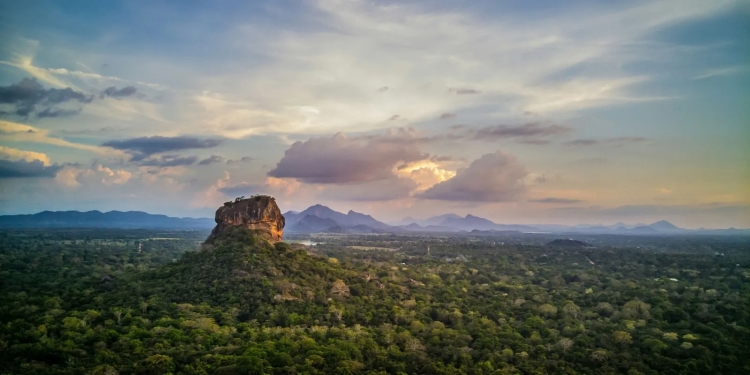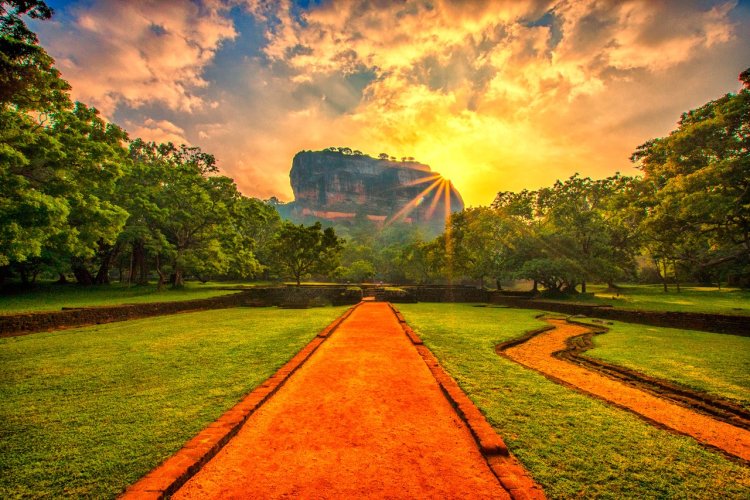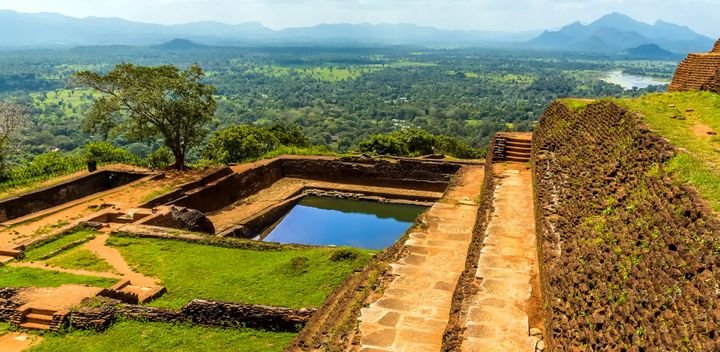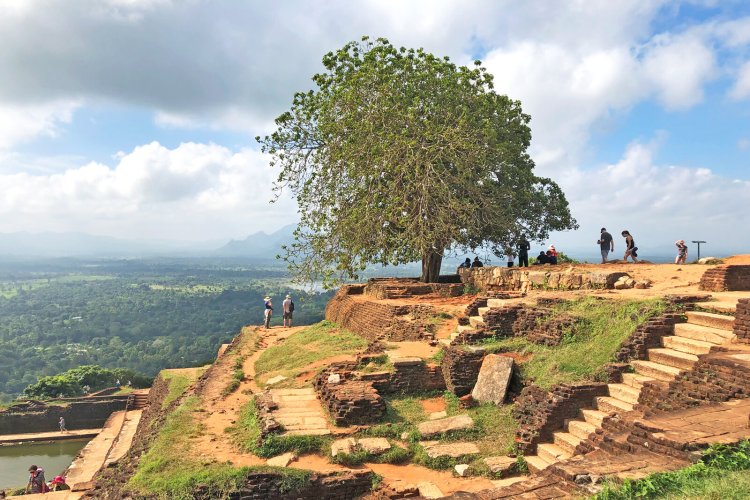Exploring Sigiriya: Sri Lanka’s Ancient Rock Fortress and Cultural Gem
Discover Sigiriya, Sri Lanka’s UNESCO World Heritage rock fortress! Explore ancient frescoes, stunning water gardens, and breathtaking views. Plan your visit with our comprehensive travel guide at imsrilanka.com for an unforgettable cultural adventure.
Introduction to Sigiriya: A UNESCO World Heritage Marvel
Nestled in the heart of Sri Lanka’s Cultural Triangle, Sigiriya, often called the "Lion Rock," is a breathtaking ancient rock fortress that stands as a testament to the island’s rich history and architectural brilliance. Rising 200 meters above the lush plains of the Matale District, this UNESCO World Heritage Site is a must-visit for travelers seeking a blend of history, culture, and natural beauty. Whether you’re a history enthusiast, an adventure seeker, or a culture lover, Sigiriya offers an unforgettable experience that captures the essence of Sri Lanka’s heritage.
In this guide, we’ll dive into why Sigiriya is one of the top travel destinations in Sri Lanka, what makes it a cultural and heritage gem, and how you can plan your visit to make the most of this iconic site. From the ancient frescoes to the panoramic views from the summit, here’s everything you need to know about exploring Sigiriya.
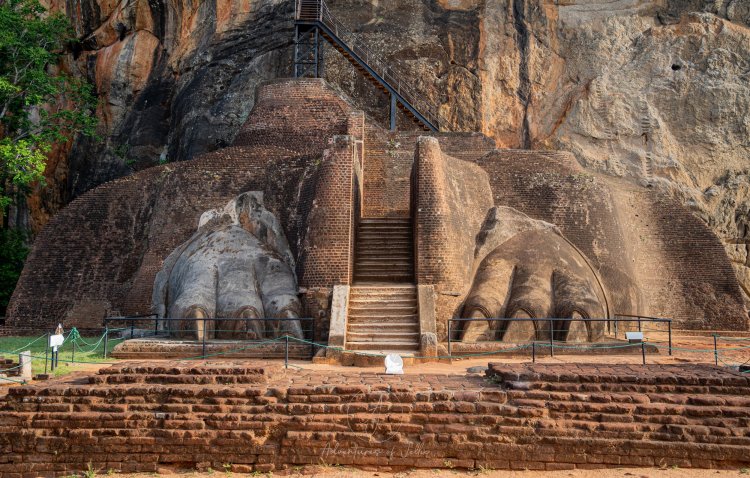
Why Visit Sigiriya? The Eighth Wonder of the World
Sigiriya is often referred to as the "Eighth Wonder of the World" due to its unique combination of architectural ingenuity, artistic mastery, and historical significance. Built in the 5th century AD by King Kashyapa, this rock fortress was once a royal palace, a Buddhist monastery, and a strategic stronghold. Today, it stands as one of Sri Lanka’s most iconic landmarks, drawing thousands of international visitors each year. Here’s why Sigiriya should be on your travel itinerary:
-
Historical Significance: Sigiriya is a window into Sri Lanka’s ancient past, showcasing the island’s advanced engineering and artistic achievements.
-
Cultural Heritage: The site is home to the famous Sigiriya frescoes, intricate water gardens, and the legendary Mirror Wall, offering a glimpse into the lives of ancient royalty.
-
Stunning Views: The climb to the summit rewards visitors with 360-degree views of emerald forests, paddy fields, and distant mountains.
-
Unique Experience: From the Lion’s Paws to the ancient graffiti on the Mirror Wall, Sigiriya offers a one-of-a-kind adventure that blends history with natural splendor.
For foreign travelers, Sigiriya is not just a destination—it’s a journey through time, offering a chance to connect with Sri Lanka’s vibrant cultural tapestry.
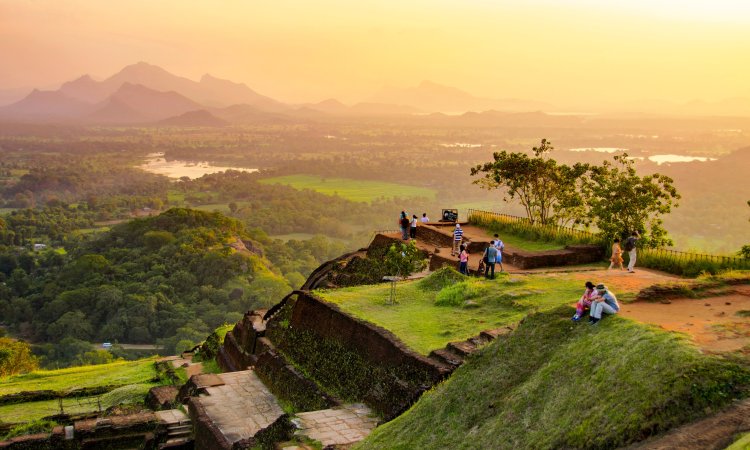
The History of Sigiriya: A Tale of Ambition and Art
To truly appreciate Sigiriya, it’s essential to understand its historical context. In 477 AD, King Kashyapa, the illegitimate son of King Dhatusena, seized the throne after a dramatic power struggle. Fearing retribution from his brother Moggallana, the rightful heir, Kashyapa built an impregnable fortress atop Sigiriya Rock. This ambitious project transformed the massive gneiss rock into a royal palace surrounded by elaborate gardens, moats, and ramparts.
According to legend, Kashyapa’s fortress was designed to emulate the mythical abode of Kubera, the god of wealth. The construction, completed in just seven years, included advanced hydraulic systems, vibrant frescoes, and a colossal lion statue at the entrance—hence the name "Lion Rock." Despite its grandeur, Kashyapa’s reign ended in 491 AD when Moggallana returned with an army, leading to Kashyapa’s defeat. After his fall, Sigiriya was abandoned as a palace and became a Buddhist monastery until the 14th century.
Today, Sigiriya’s ruins, including the palace foundations, gardens, and frescoes, are remarkably well-preserved, earning it UNESCO World Heritage status in 1982. Visiting Sigiriya allows you to step into this dramatic history and marvel at the ingenuity of ancient Sri Lankan civilization.
Top Attractions at Sigiriya: What to See and Do
Sigiriya is more than just a rock climb—it’s a sprawling complex with multiple attractions that cater to diverse interests. Here are the must-see highlights for your visit:
1. Sigiriya Rock Fortress
The centerpiece of Sigiriya is the rock fortress itself, a 200-meter-high column of gneiss rock that dominates the landscape. The climb to the summit involves a series of steep staircases, but the effort is worth it for the panoramic views and the chance to explore the ruins of Kashyapa’s palace. The summit offers remnants of the royal palace, including foundations and pools, set against a backdrop of stunning vistas.
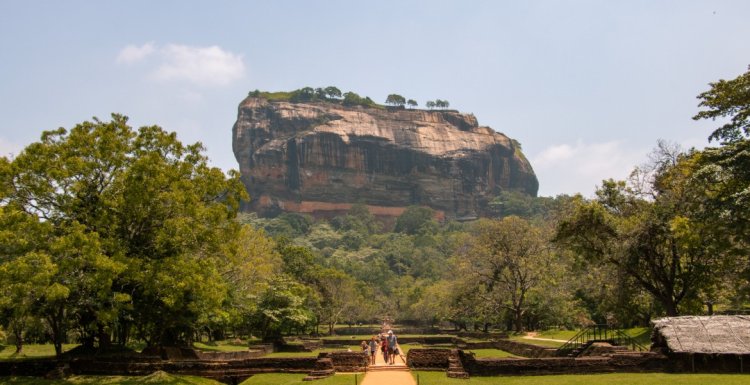
Travel Tip: Start your climb early in the morning to avoid crowds and the midday heat. Wear comfortable shoes and bring water, as the ascent can take 1-2 hours.
2. The Sigiriya Frescoes
Halfway up the rock, a sheltered gallery houses the famous Sigiriya frescoes, often called the "Maidens of the Clouds." These 5th-century paintings depict beautifully adorned women, believed to be celestial nymphs or members of Kashyapa’s harem. The vivid colors and intricate details are a testament to ancient Sri Lankan artistry.
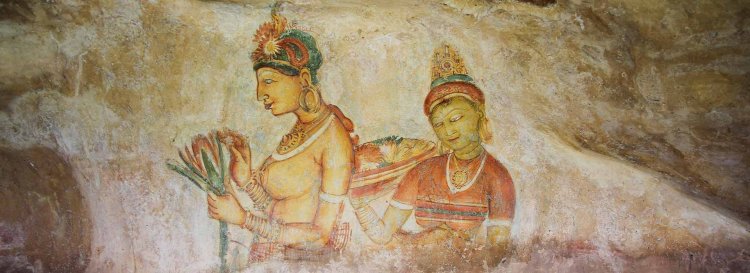
Travel Tip: Photography is restricted in the fresco gallery to preserve the artwork, so take time to admire the details with your own eyes.
3. The Mirror Wall
The Mirror Wall, a polished plaster surface along the rock’s western face, was once so reflective that it mirrored the king’s image. Over centuries, visitors left inscriptions on the wall, including ancient graffiti praising the frescoes. These writings offer a fascinating glimpse into the thoughts of travelers from the 6th to 14th centuries.
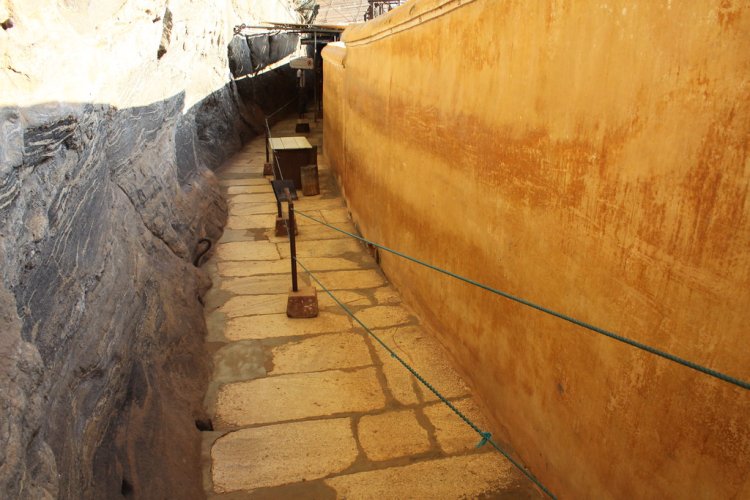
Travel Tip: Look for translations of the graffiti at the Sigiriya Museum to understand the historical context of these inscriptions.
4. The Lion’s Paws
At the base of the final ascent, two enormous lion paws carved from stone mark the entrance to the fortress. Originally, a massive brick lion statue stood here, with stairs leading through its mouth to the summit. The paws are all that remain, but they remain an iconic symbol of Sigiriya’s grandeur.
Travel Tip: The Lion’s Paws are a great spot for photos, especially in the late afternoon when the rock glows in the sunlight.
5. The Water Gardens
At the base of Sigiriya Rock, the water gardens are among the oldest landscaped gardens in the world. Featuring symmetrical pools, fountains, and advanced hydraulic systems, these gardens showcase the engineering prowess of ancient Sri Lanka. The gardens are divided into water, boulder, and terraced sections, each with its own charm.
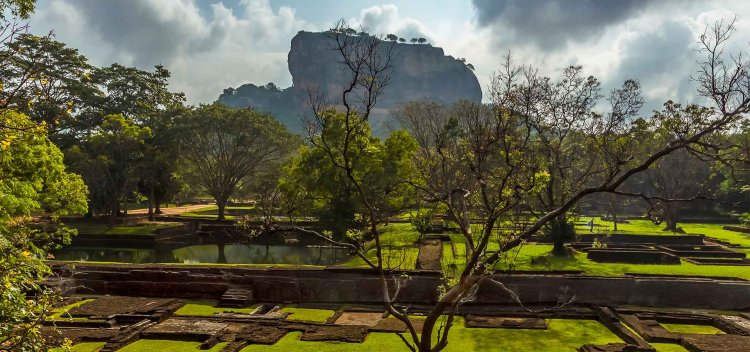
Travel Tip: Explore the gardens in the early morning or late afternoon for a serene experience, and look for the still-functional fountains that operate during the rainy season.
6. Sigiriya Museum
The Sigiriya Museum, located near the entrance, offers a deeper understanding of the site’s history. Exhibits include artifacts, sculptures, and a diorama of the fortress, along with a recreation of the frescoes for those unable to climb. The museum is a great starting point for your visit.

Travel Tip: Allocate 30-45 minutes to explore the museum before heading to the rock.
7. Pidurangala Rock
For a less crowded alternative to Sigiriya Rock, consider hiking Pidurangala Rock, located just 1 km away. This shorter climb offers stunning views of Sigiriya Rock against the horizon, especially at sunrise or sunset. The trail passes a cave temple with a reclining Buddha statue, adding a spiritual dimension to the hike.
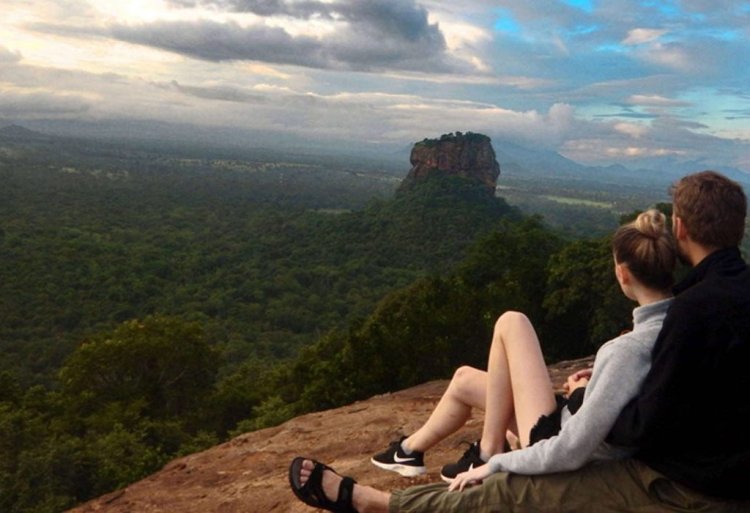
Travel Tip: Combine a sunrise hike to Pidurangala with a day visit to Sigiriya for a full cultural experience.
Planning Your Visit to Sigiriya: Practical Tips for Foreign Travelers
To make your trip to Sigiriya seamless and enjoyable, here are some practical tips tailored for international visitors:
Getting to Sigiriya
Sigiriya is located 175 km from Colombo and 25 km from Dambulla, the nearest major transport hub. Here are your options:
-
By Bus: Take a bus from Colombo or Kandy to Dambulla (2-3 hours, $2-5 USD), then a local bus or tuk-tuk to Sigiriya (30 minutes, $0.50-5 USD).
-
By Tuk-Tuk: A tuk-tuk from Dambulla to Sigiriya costs around $5-7 USD.
-
By Private Car: Hiring a car with a driver is a convenient option for foreign travelers, costing $50-80 USD for a day trip from Colombo.
-
By Air: Domestic flights from Colombo to Sigiriya’s airstrip are available but less common.
Travel Tip: Use Dambulla as a base for day trips to Sigiriya, as it offers more accommodation and dining options.
Best Time to Visit
The best time to visit Sigiriya is from December to April, when the weather is dry and temperatures are comfortable (25-30°C). Avoid weekends and public holidays to escape crowds, and aim for early morning or late afternoon visits to beat the heat.
Travel Tip: Check for Poya days (full moon festivals), as these are significant in Sri Lanka and may affect local transport and crowds.
Tickets and Costs
-
Entrance Fee: The entrance fee for foreign visitors is approximately $30 USD, which includes access to the rock fortress and museum.
-
Guides: Local guides are available for $10-15 USD and provide valuable insights into the site’s history.
-
Additional Costs: Bring cash for water, snacks, or souvenirs, as there are no vendors inside the paid area.
Travel Tip: Purchase tickets at the official ticket office near the entrance to avoid scams.
What to Bring
-
Comfortable clothing and shoes for climbing
-
Sunscreen, a hat, and sunglasses for sun protection
-
A reusable water bottle (water is not sold inside the fortress)
-
A camera for capturing the stunning views
Travel Tip: Wear lightweight, breathable clothing, as the climb can be sweaty and humid.
Where to Stay
Sigiriya village offers a range of accommodations, from budget guesthouses to luxury resorts. Popular options include:
-
Hotel Sigiriya: A comfortable mid-range hotel with views of the rock.
-
Jetwing Vil Uyana: A luxury eco-resort with private villas.
-
Local Homestays: Affordable and authentic, offering a chance to connect with locals.
Travel Tip: Book accommodations in advance, especially during peak season (December-April).
Exploring the Cultural Triangle: Day Trips from Sigiriya
Sigiriya’s central location in Sri Lanka’s Cultural Triangle makes it an ideal base for exploring nearby UNESCO World Heritage Sites. Here are two must-visit destinations:
1. Dambulla Cave Temple
Located 25 km from Sigiriya, the Dambulla Cave Temple is a series of five rock caves adorned with ancient Buddhist murals and statues. This sacred site offers a spiritual contrast to Sigiriya’s royal history.
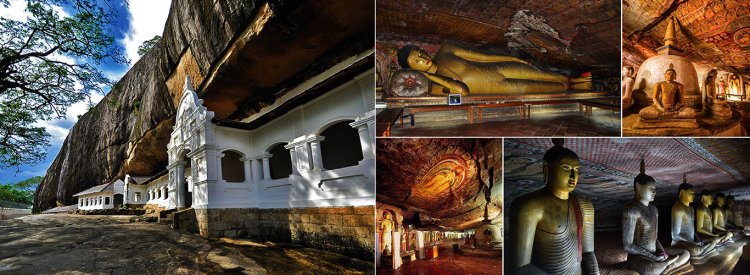
Travel Tip: Combine a morning visit to Sigiriya with an afternoon trip to Dambulla for a full day of exploration.
2. Polonnaruwa
The ancient city of Polonnaruwa, 45 km from Sigiriya, is another UNESCO World Heritage Site known for its well-preserved ruins, temples, and statues. A visit takes about 3-4 hours and is perfect for history buffs.
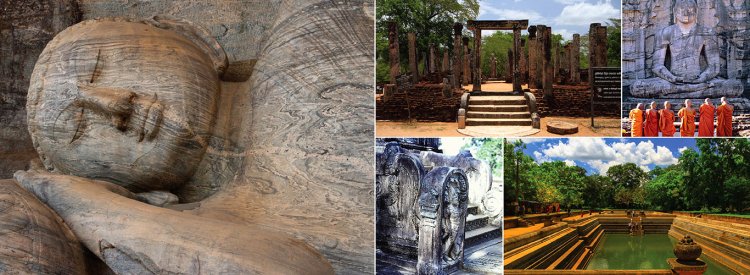
Travel Tip: Rent a bicycle in Polonnaruwa to explore the sprawling ruins at your own pace.
Cultural Experiences in Sigiriya: Connect with Local Traditions
Beyond the rock fortress, Sigiriya offers opportunities to immerse yourself in Sri Lankan culture:
-
Village Tours: Join a guided tour through nearby villages like Ehalagala to experience rural life, taste homemade Sri Lankan food, and ride a bullock cart.
-
Local Cuisine: Try authentic dishes like rice and curry, kottu roti, or hoppers at local restaurants in Sigiriya village.
-
Shopping: Shop for Sri Lankan tea, textiles, and wood carvings at local markets or the museum gift shop.
Travel Tip: Visit a local family-run restaurant for an authentic dining experience and ask for mild flavors if you’re not used to spicy food.

What's Your Reaction?







